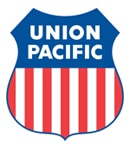President Donald J. Trump has appointed Ann Begeman to serve as Acting Chairman of the Surface Transportation Board (STB). Begeman is currently serving a second, five-year term as a Member of the Board following her recent nomination by President Barack Obama Dec. 7, 2016, and her unanimous confirmation by the U.S. Senate Dec. 9, 2016. Ann first joined the Board May 2, 2011. Her current term expires Dec. 31, 2020.
“It is an honor to serve the public on the Board, and I am grateful to President Trump for the opportunity to lead the agency at this time,” said Begeman. “I look forward to continuing the important mission of the STB in my new capacity as Acting Chairman, working with the new Administration, my fellow Board Members, Daniel Elliott and Deb Miller, our dedicated agency staff, and our important stakeholders. I also wish to recognize former Chairman Daniel Elliott for his service and leadership, and his sincere efforts to facilitate a smooth transition during the change in administrations.”
Prior to her 2011 appointment, Begeman held Senate staff positions on Capitol Hill for more than 20 years, playing a key role in the crafting of major transportation legislation, including the ICC Termination Act, which created the STB. She served as the Republican Staff Director for the Senate Committee on Commerce, Science, and Transportation under the leadership of U.S. Senator Kay Bailey Hutchison and as the Committee’s Deputy Staff Director and Transportation Policy Advisor under the leadership of U.S. Senator John McCain. Begeman has also served as Legislative Director and Acting Chief of Staff for Senator John McCain and as a Legislative Assistant for U.S. Senator Larry Pressler. She has also worked in the private sector, serving as a benefits specialist for First American Bankshares, Inc.
Begeman is a native of Humboldt, South Dakota. She earned a B.S. in business administration from the University of South Dakota.
Author: amyr
4th Quarter 2016
Net Earnings: $458 million or $0.49 per share, up from $466 million or $0.48 per share in 2015’s 4th quarter
Revenue: Increased by 9 percent to $3,037 billion
Operating Income: Increased to $1 billion over last year’s $791 million
Operating Ratio: 67 percent, an improvement over last year’s 71.6 percent
2016 Annual Earnings
Net Earnings: Decreased to $1.7 billion or $1.81 earnings per share, down from $1.96 billion or $2.00 per share in 2015
Revenue: Decreased to $11.1 billion from $11.8 billion in 2015
Operating Income: Decreased $3.4 billion from $3.6 billion in 2015
Operating Ratio: 69.4 percent
Click here to read CSX’s full earnings report
4th Quarter 2016
Net Earnings: Net income increased by 20 percent to C$3.84 million; diluted earnings per share increased 25 percent to C$2.61 from fourth quarter 2015’s reported C$2.08
Revenue: Decreased 3 percent to C$1.64 billion from C$1.69 billion
Operating Income: Increased 6 percent to C$717 million over fourth quarter 2015’s C$677 million
Operating Ratio: 56.2 percent, a record low
2016 Annual Earnings
Net Earnings: Net income increased by 18 percent to C$1.6 billion from C$1.4 billion; diluted earnings per share increased 27 percent to C$10.63 from C$8.40
Revenue: Decreased 7 percent to C$6.23 billion from 2015’s reported C$6.71 billion
Operating Income: Decreased 4 percent from 2015’s C$2.7 billion to C$2.6 billion
Operating Ratio: 58.6 percent, a record low
Click here to read CP’s full earnings report
4th Quarter 2016
Net Earnings: $1.1 billion or $1.39 per diluted share, an increase of 6 percent
Revenue: Down 1 percent to $5.2 billion
Operating Income: Up 2 percent to $2.0 billion
Operating Ratio: Improved by 1.2 points to 62.0 percent
2016 Annual Earnings
Net Earnings: Decreased by 11 percent to $4.2 billion or 8 percent to $5.07 per diluted share, down from 2015’s reported $4.8 billion or $5.49 per diluted share
Revenue: Decreased to $19.9 billion from $21.8 billion
Operating Income: Decreased by 10 percent to $7.3 billion
Operating Ratio: Increased 0.4 points to 63.5 percent
Click here to read UP’s full earnings report
4th Quarter 2016
Net Earnings: Decreased by 5 percent to $130 million or $1.21 earnings per share
Revenue: Static at $599 million
Operating Income: Decreased by 4 percent to $211 million
Operating Ratio: 64.8 percent, a 1.4 point increase from 2015’s 4th quarter report of 63.4 percent
2016 Annual Earnings
Net Earnings: $480 million or $4.43 per share, down from 2015’s reported $485 million or $4.40 per share
Revenue: Down 3 percent to $2.3 billion
Operating Income: Increased by 2 percent to $819 million
Operating Ratio: 64.9 percent, a 1.9 point improvement over 2015
Click here to read KCS’s full earnings report
4th Quarter 2016
Net Earnings: Increased 8 percent to C$1,018 million; diluted earnings per share increased 12 percent to C$1.32
Revenue: Increased by 2 percent to C$3,217 million
Operating Income: Increased by 3 percent to C$1,395 million
Operating Ratio: 56.6 percent, an improvement of 0.6 points
2016 Annual Earnings
Net Earnings: Increased 3 percent to C$3,640 million; diluted earnings per share rose 6 percent to C$4.67
Revenue: Decreased by 5 percent to C$12,037 million
Operating Income: Increased 1 percent to C$5,312 million
Operating Ratio: Improved 2.3 points to 55.9 percent
Click here to read CN’s full earnings report
4th Quarter 2016
Net Earnings: Increased 15 percent to $416 million; diluted earnings per share increased 18 percent to $1.42
Revenue: Decreased 1 percent to $2.5 billion
Operating Income: Increased 19 percent to $761 million
Operating Ratio: 69.4 percent, a 510 point improvement over 74.5 percent reported for the fourth quarter of 2015
2016 Annual Earnings
Net Earnings: Increased 7 percent to $1.7 billion; diluted earnings per share increased 10 percent to $5.62
Revenue: Decreased by 6 percent to $9.9 billion
Operating Income: Increased 7 percent to $3.1 billion
Operating Ratio: Improved 370 points to 68.9 percent as compared to 2015’s reported 72.6 percent
Click here to read NS’s full earnings report
Note: Operating ratio is a railroad’s operating expenses expressed as a percentage of operating revenue, and is considered by economists to be the basic measure of carrier profitability. The lower the operating ratio, the more efficient the railroad.
Chuck Akers, lifelong train engineer, was forced to retire early after three physicians concurred that his numerous experiences with collisions that were caused by vehicles and people blocking the tracks (he was cleared of any wrongdoing in all incidents), had culminated into Post Traumatic Stress Disorder (PTSD). PTSD is on the rise among our nation’s locomotive engineers and conductors. View the complete story posted by Roanoke.com, here.
Commuter rail has been former Vice President Joe Biden’s method of transportation his entire career. During his 36-year run as U.S. Senator, Biden commuted daily from his home in Delaware to Washington D.C., then back home again – a three hour, roundtrip commute. On Friday, January 20, immediately after the inauguration, Biden kept with tradition and took the Amtrak home to Wilmington. See a video clip reported by CNN and posted on Youtube, here.
Trains.com reported that the Bureau of Labor Statistics released a report showing that railroad jobs dropped by 3.8 percent in 2016 – reflecting the elimination of approximately 8,600 railroad jobs. In 2015, the drop in railroad jobs was reported at at sharper decline of 6.8 percent. Read the complete article here.
Robert W. Vann IV, 54, was killed Tuesday, Jan. 10 when the BNSF crew van that he was riding in was involved in a head-on collision with a pick-up truck near Wolf Point, Mont.
Vann served his country in the U.S. Air Force before hiring out as a conductor with BNSF in Minot, N.D. He had more than 13 years of service with the railroad at the time of his death and was very active in Local 1059. Vann served as local legislative representative from 2011 to 2013; legislative vice chairperson from 2012 to 2016; and vice local chairperson from 2015 to 2017. During his free time, he enjoyed volunteering in his community.
Vann is survived by his wife Terra Vann; children Cassie (Joe) Faiai, Bobby (Virginia) Vann, Chase (Cassie) Vann, Tiffany (Mike) St. Lawrence, Cody Vann and Camie Vann; grandchildren Kierna, Kyric, Sefa, Alyssa, Samson, Aisi, Teia and Brooklyn; sister Susan (David) Vann-Spruill; brother Andrew (Sandy) Vann; and a few nieces and nephews. He was preceded in death by his parents Robert III and Mary (Flowers) Vann; and grandparents Thelma and Robert Vann II, and Luther and Mae Flowers.
A celebration of life will be held Saturday, Jan. 14, 2017, from 1:00 p.m. to 4:00 p.m. at the Church of Jesus Christ of Latter Day Saints, 2025 9th Street NW, Minot, ND 58701. Click here to leave condolences for the family.
On Monday, January 16, 2017, every member of the SMART union will stand with our entire nation in honor, solidarity and remembrance of the life and legacy of Dr. Martin Luther King Jr.
Dr. King’s brilliance, vision, leadership and ultimate personal sacrifice shifted the course of American history forever by shedding light and bringing hope to a nation marred by racism, ignorance and inequality.
His work and his words brought the promise of justice, hope and freedom to African Americans, to people of color, and to the oppressed everywhere.
Dr. King’s words still ring as powerful, relevant and true today as they did more than 50 years ago.
“And so even though we face the difficulties of today and tomorrow, I still have a dream. It is a dream deeply rooted in the American dream.
“I have a dream that one day this nation will rise up and live out the true meaning of its creed: We hold these truths to be self-evident, that all men are created equal.
“I have a dream that my four little children will one day live in a nation where they will not be judged by the color of their skin but by the content of their character.”
–From Dr. Martin Luther King’s historical speech, “I Have a Dream,” delivered August 28, 1963, on the steps of the Lincoln Memorial, Washington D.C.
Read Dr. King’s speech in its entirety, here.










